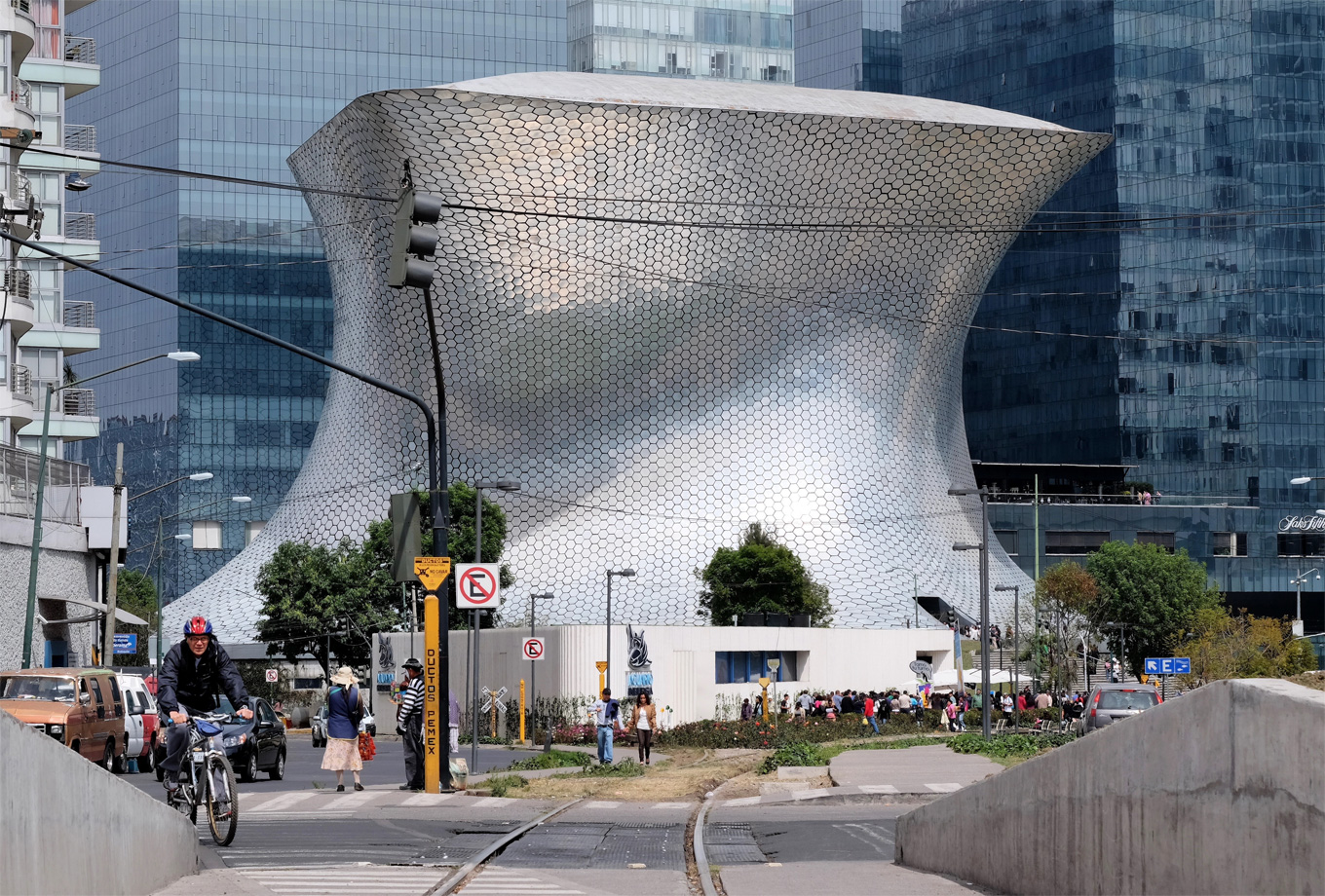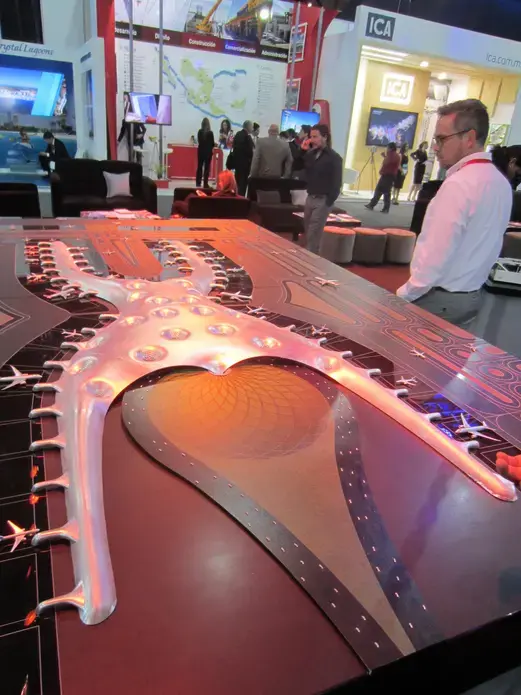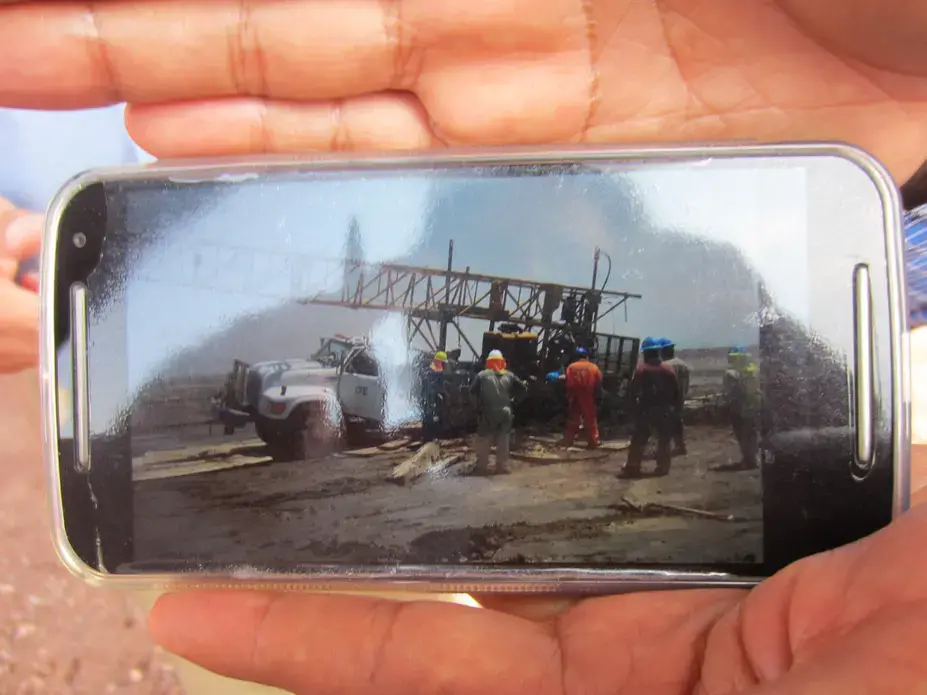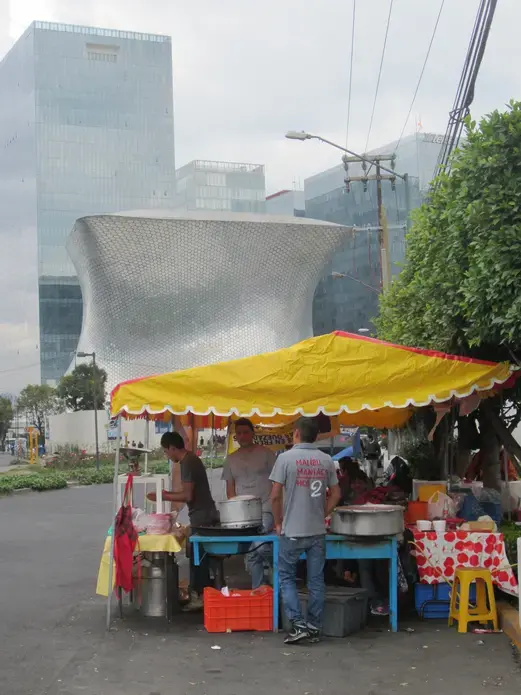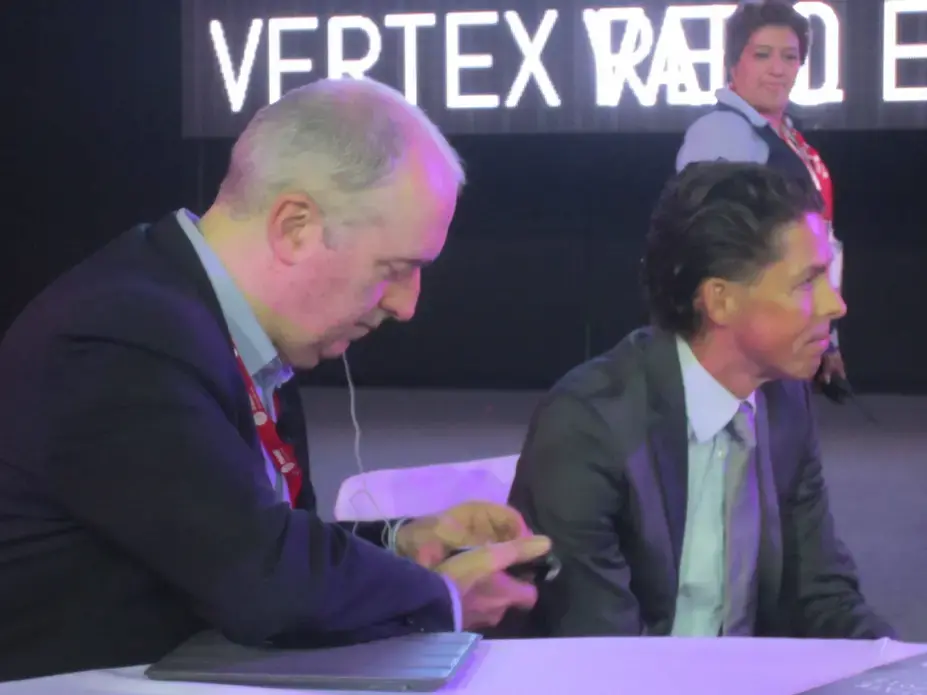After a tour of the main floor of the office, I went upstairs to meet Fernando Romero. The principal was seated at his decidedly non-office-like workspace, a circular white table surrounded by black chairs—he wore a shimmering purple Prada jacket made of phosphorescent windbreaker material. I had seen photos of Romero and had screened a web video of one of his lectures but in person he has a smaller physique and larger personality than I had expected. He's built like a jockey, short and slight. And he is nearly as shiny as his sportcoat, his cheeks radiant with a stubble-less sheen, his hair slicked into unctuous black waves, and his gripping eyes among the purest blue in all of Mexico City.
I took a seat next to the 43-year-old architect as he scribbled in a sketchbook using a purple ink that perfectly matched his outfit. Drawing a triangle, he blasted through pleasantries and dove into his point: architects tend to serve the wealthy minority "at the top of the pyramid," but he's interested in how architects can serve all levels of society. In Mexico and other developing countries, those at the base of the pyramid typically build their own structures themselves—"architecture without architects"—but there is still plenty the profession can do to help. His firm, FR-EE, for example, has created a prototype of a modular housing unit that can be unloaded in the barrios of Mexico and customized by users. Generating its own solar power and harvesting its own rainwater, it is perfect for areas that poverty and neglect have left off the utility grid. Circling the bottom of the pyramid with his royal purple pen, Romero told me, "I love to read about what's happening in this context."
Plenty of architects love to read about what's happening at the bottom of the pyramid, of course, but in Mexico City you don't just read about it; you're immersed in it. On the subway ride to the office, I found myself sardined in next to a shabbily dressed old laborer with a lined, terra cotta face out of a Diego Rivera mural. The walk from the subway stop to Romero's secret office took me past an informal market where scores of vendors held sway under tarps and hawked everything from homemade sweets to pirated DVDs. I wanted to get Fernando out into the metropolis to take in its overflowing life and discuss its impact on his work, perhaps taking the subway to the city's main square, the Zocalo, and then walking through the free-flowing flea market nearby that spills out into the streets. But Romero's courtly executive assistant, Hugo Vela, had nixed that in an email: "Kindly note that due to security reasons Fernando cannot ride by Metro or walk by foot in the Zocalo area."
If Romero can only read about life at the bottom of the pyramid, it is because he lives at the top of it. Fifteen years ago, Fernando married the daughter of Carlos Slim, the richest man in Mexico (and, on days when Microsoft stock is down, the world). Being kidnapped for ransom is always in the back of his mind and he travels everywhere with a bodyguard. But it all made me wonder: Can you design great cities if you can't even move through them?
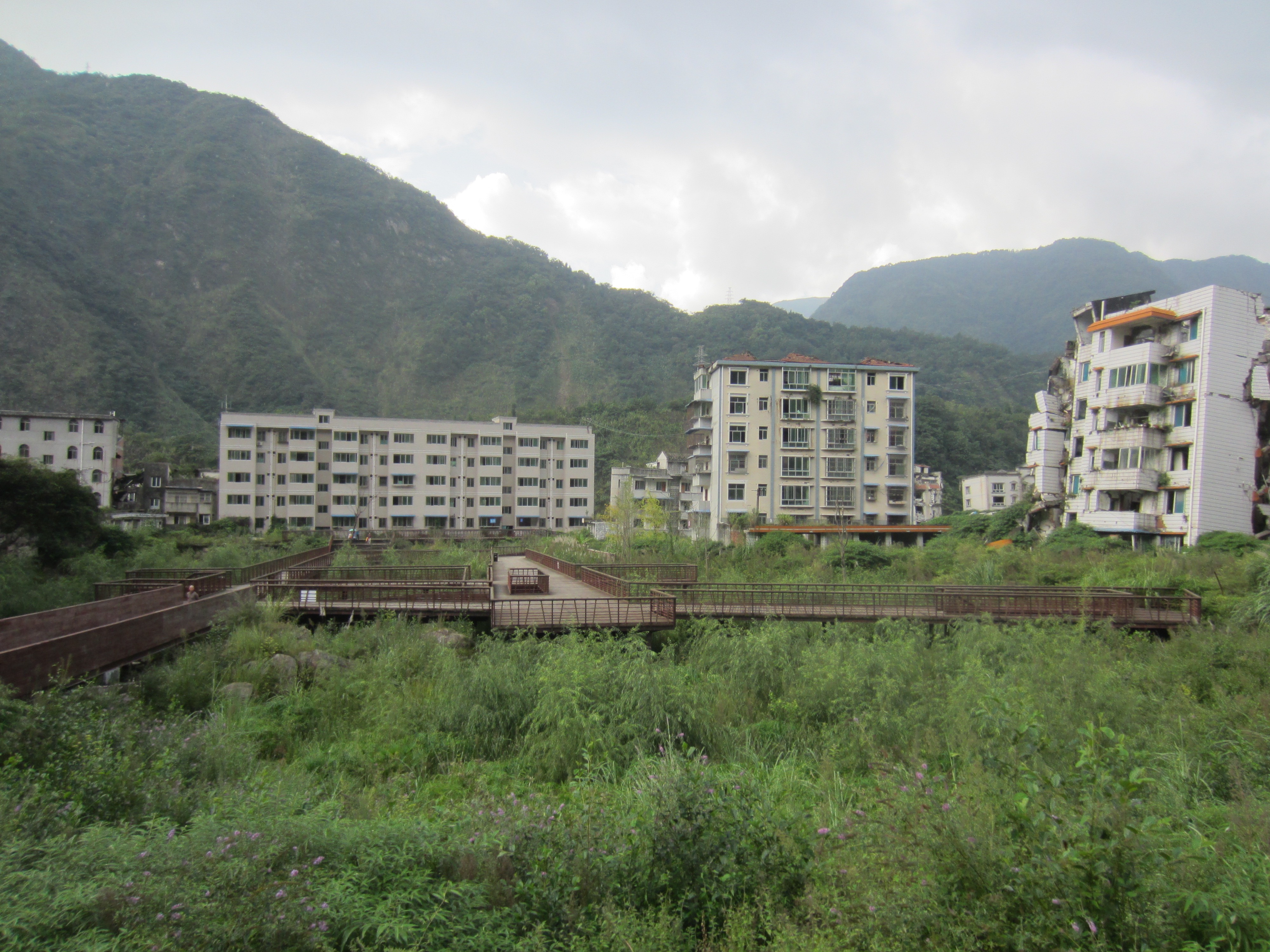
Education Resource
Meet the Journalist: Daniel Brook
In his multi-country series, "Urbanization in the Developing World," journalist and author Daniel...


